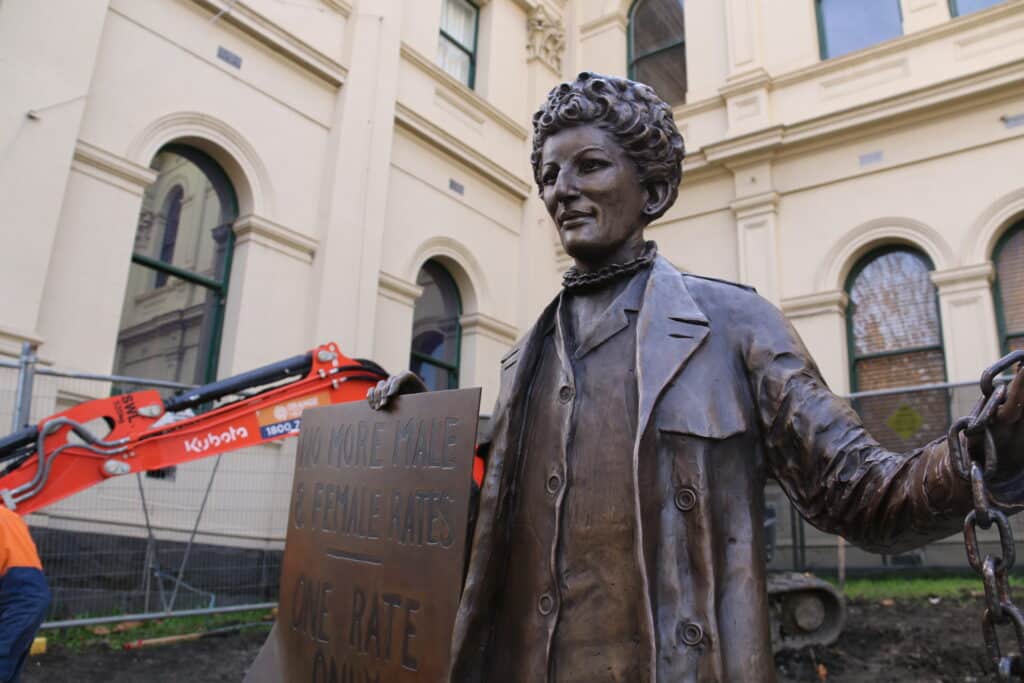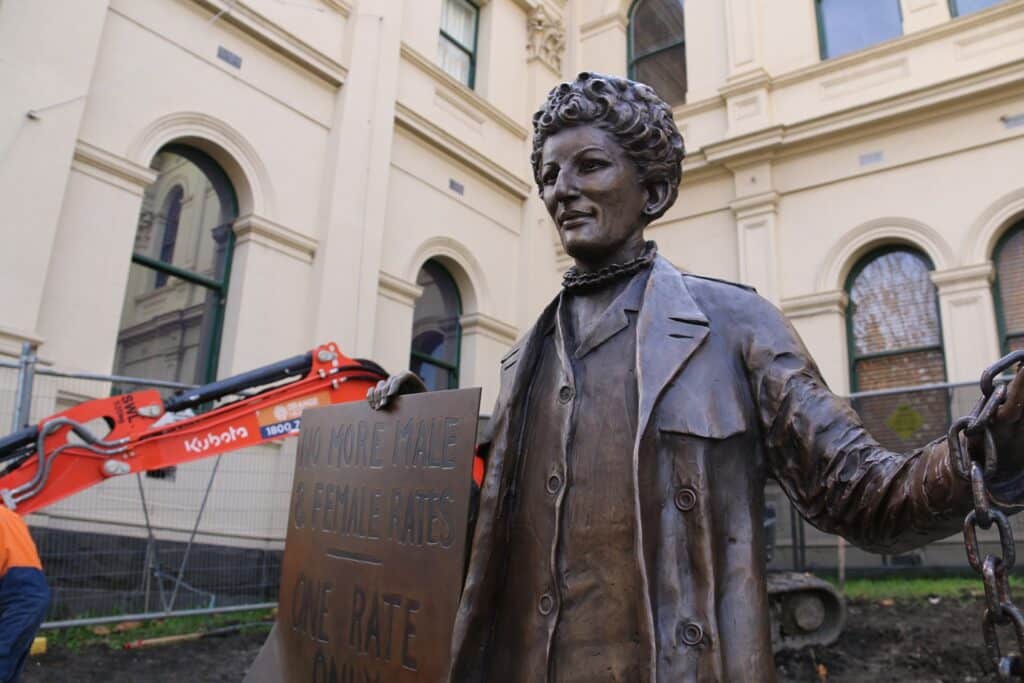A bronze statue depicting an iconic equal pay protest is being unveiled today by Julia Gillard AO on the corner of Lygon & Victoria streets, outside Victorian Trades Hall Council.
The monument is of Zelda D’Aprano, a union activist and feminist, who chained herself to the doors of the Commonwealth building following the failure of the Arbitration Commission to award Equal Pay in 1969.
Victorian artist Jennifer Mann created the work, titled “Chain Reaction”, to honour Zelda within the context of women’s activist history more broadly.

“The creation of this statue of Zelda D’Aprano is a critical act of commemorative justice in Australia, where less than 4 per cent of statues depict women,” said Professor Clare Wright OAM, Professor of History, La Trobe University and co-convenor of A Monument of One’s Own.
“Zelda’s famous action in 1969 saw her occupying public space in a way that was counter to the prevailing norm of women as silent, demure and inconspicuous. It is fitting that she will now occupy a permanent space in our civic landscape, a reminder that women have always had to fight for the rights and freedoms we enjoy today.”

Wright says Zelda’s statue is also a reminder of the still existent gender pay gap and the continued sexism women face in society.
“We hope the statue will motivate people to go back to the barricades to achieve wage justice for women. Women’s economic security depends on it,” she says.

Assistant Secretary of Trades Hall, Wilhelmina Stracke called Zelda’s activism “legendary” and said that she’s “an important link in the chain of trade union women who have taken action over decades to advance the cause of women’s rights at work.”
“She organised women to ride trams and pay only 75 per cent of the fare, she joined pub crawls protesting women’s exclusion from hotel front bars, and contributed to the organising of Melbourne’s first pro-choice rally”, said Stracke.
“But by far her most iconic action was chaining herself to the Commonwealth building to protest the Federal Arbitration Commission’s failure to deliver equal pay. On that day she told a journalist ‘Today it was me, tomorrow there will be two of us, the next day four and it will go on and on and there won’t be any stopping it’.”

While Zelda’s statue stands alone, there’s landscaping around the site that invites visitors to stand with her. Stracke says it’s a place for Victorians to “reflect on the progress that has been made, and consider their own role in building a more just and equal world.”

Wright adds that Zelda’s statue matters because “who we remember in history and how we remember them makes a huge difference to how we see ourselves today.”
“Monumental change in the visibility, credibility and civic recognition of women is happening, one statue at a time. Closing the commemorative gap will help us close the respect gap that we know leads to other forms of violence and discrimination against women,” says Wright.
Zelda’s statue was commissioned by the Victorian Trades Hall Council and A Monument of One’s Own. The project has been funded by union contributions and individual donations, with support from the Victorian Government through the Women’s Public Art Program.


